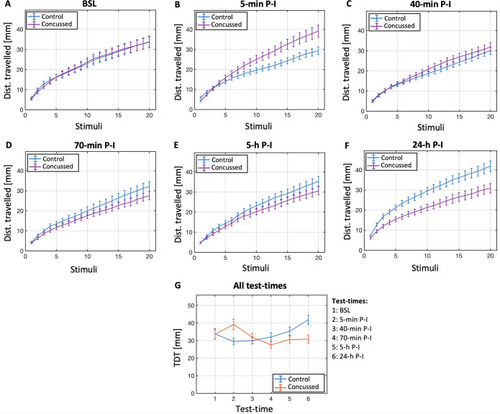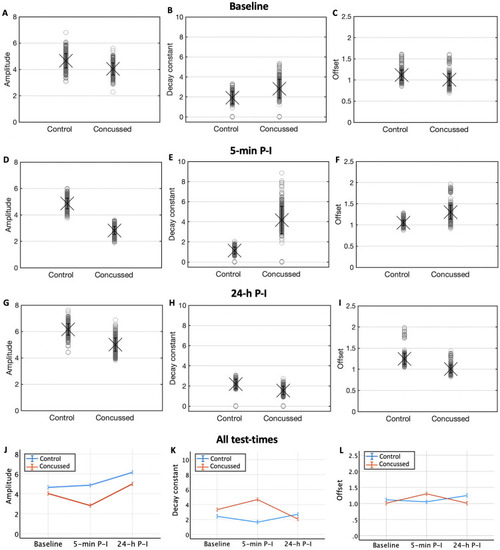- Title
-
A non-invasive biomechanical model of mild TBI in larval zebrafish
- Authors
- Beppi, C., Penner, M., Straumann, D., Bögli, S.Y.
- Source
- Full text @ PLoS One
|
Concussion procedure.
(A) Illustration of the mounting of the cylindrical capsule (containing fish in water) on the holder, following the numerical order of the panels. The capsule’s black lid was provided, on its side exposed to water, of a convex rounded protuberance of smaller diameter than the cylindrical capsule (2). This shape allowed any air contained in the capsule to be expelled by pressure when the lid was placed on top of the capsule (containing fish in water). The lid-covered capsule was placed on the holder, which had a cylindrical cavity (size-matching the capsule’s diameter) that prevented the capsule from moving side-wise (A1-A3). The screws on the sides were then used to securely lock the capsule (3,4). (B) Illustration of the movement performed by the motor: the capsule is slowly brought up to the start position (B1) and rapidly slides down to the end position (B2) with the parameters described in the following panels. (C) Features of the linear movement plotted as a function of time (ms): position, velocity, acceleration and jerk. |
|
Startle responses over test-times.
Mean distance travelled (+/-1 SE) at each stimulus, for both groups (N = 72, each), at each time point (A-F). Total distance travelled after 20 vibratory stimuli (M +/-1 SE) for both groups (N = 72, each) at each time point (G). A 2x6 mixed ANOVA (Ncontrol = 72, Nconcussed = 72) was run. No significant main effect of group (F(1,142) = 0.499, p>0.05) on the mean TDT20 was found, with controls (M = 33.724, SE = 1.446) and concussed (M = 32.28, SE = 1.446) performing similarly overall. A significant main effect of time (F(4.365,619.792) = 2.559, p = 0.033) was observed, although without significant differences at the pairwise level. The effect of time was different for the control and concussed group (G), as confirmed by a significant interaction between group and time (F(4.365, 619.792) = 5.644, p<0.001). The interaction effect was then broken down through two one-way repeated-measures ANOVAs, which analysed the effect of time (six levels) for the control and concussed groups separately. For the control group (N = 72) there was a significant effect of time (F(4.137,293.712) = 4.825,p<0.001). Pairwise comparisons further indicated that the mean TDT20 was significantly higher at time 6 (24-h P-I, M = 41.885, SE = 2.655) than at time 2 (5-min P-I, M = 29.406, SE = 1.859) with p<0.001, at time 3 (40-min P-I, M = 29.975, SE = 1.898) with p = 0.004. A significant effect of time (F(4.069,288.933) = 3.403, p = 0.009) was found also for the concussed group, whose mean TDT20 was significantly lower at time 4 (70-min P-I, M = 27.547, SE = 2.018) compared to time 2 (5-min P-I, M = 39.142, SE = 3.027) with p < .001. No additional statistical differences at pairwise levels were observed. |
|
Population-level habituation descriptives.
Descriptive statistics for the mean (+/- 1 SE) amplitude (A, D, G), decay constant (B, E, H) and offset (C, F, I) of 500 bootstraps, for both groups (control and concussed), at baseline, 5 minutes and 24 hours P-I. Change (mean +/- 2 SE) in amplitude (J), decay constant (K) and offset (L) over the same 3 test-times. |



